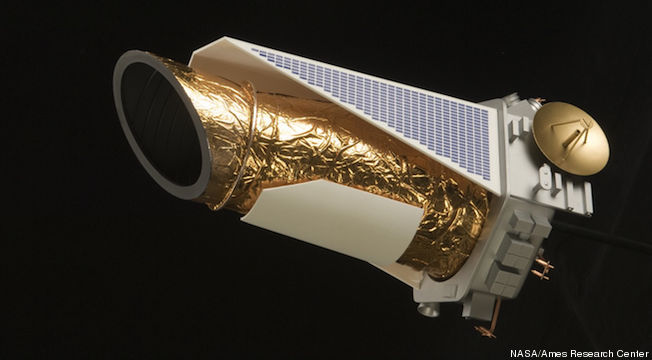| « Solar Panels on City Hall | Job Dreaming » |
Kepler
 After an impressive mission, one of humanity's most amazing machines appears to be in trouble. The Kepler space telescope has found over 2,700 planets since it was launched four years ago. It stares at the stars in one patch of the sky (near constellation Cygnus) and detects when the stars dim or wobble a tiny amount, tip-offs that planets are orbiting the star. Now that the second of four stabilizing wheels has failed, scientists back on Earth are no longer able to control Kepler.
After an impressive mission, one of humanity's most amazing machines appears to be in trouble. The Kepler space telescope has found over 2,700 planets since it was launched four years ago. It stares at the stars in one patch of the sky (near constellation Cygnus) and detects when the stars dim or wobble a tiny amount, tip-offs that planets are orbiting the star. Now that the second of four stabilizing wheels has failed, scientists back on Earth are no longer able to control Kepler.
The most famous and prolific space telescope, Hubble, was repaired by NASA astronauts four times, but that's not an option for Kepler. While Hubble is in a low Earth orbit 350 miles above the surface, Kepler orbits the Sun, not the Earth. It's currently 40 million miles away. NASA can't even get into low earth orbit without hitching a ride from Russia, so a repair mission is out of the question. Kepler's cost was $600 million, a bargain compared to Hubble's $10 billion cumulative price tag (still worth it).
Kepler's work is the latest in a long string of discoveries that show humans that the world is much bigger than we thought. Twenty years ago we weren't sure whether other stars had planets at all. Now we see that planets are very common and there's probably an average of at least one planet per star throughout the galaxy. In its one little area, Kepler found 262 planets that appear to be habitable.
Here's hoping we can replace Kepler with a whole fleet of even more powerful planet-hunting telescopes.

Recent comments